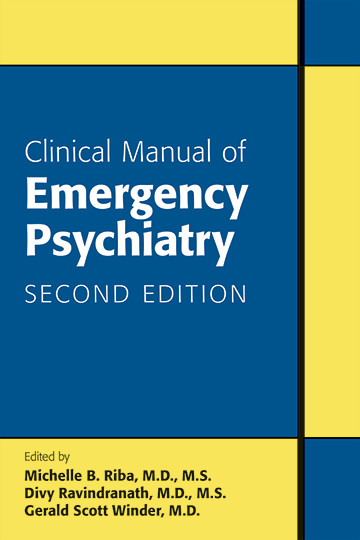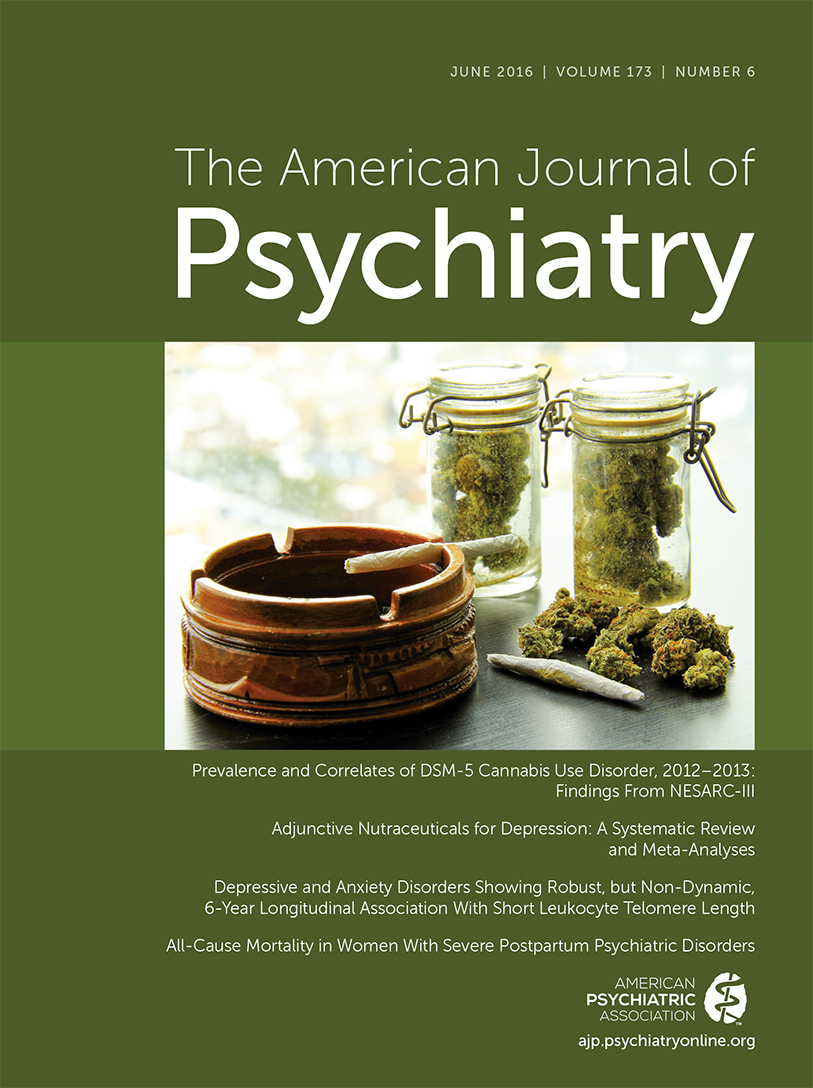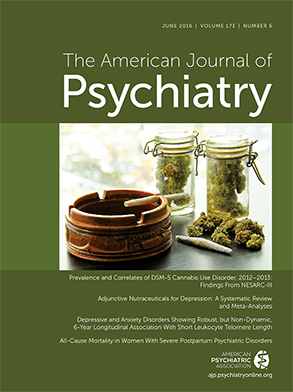More than 12% of emergency department visits are for behavioral health emergencies, a large number resulting from inadequate outpatient resources and shrinking inpatient psychiatric bed capacity (
1). To meet this demand, psychiatrists may consult in emergency departments, practice telepsychiatry, or manage psychiatric emergency services. Psychiatric emergencies are also being treated through free-standing crisis centers and regional referral centers (
2). More providers are practicing emergency psychiatry in its different forms, and there is a need for research and education specific to this subspecialty. The
Clinical Manual of Emergency Psychiatry offers a solid first step into the field of emergency psychiatry.
The book is “not meant to be a textbook” for “first-year and second-year psychiatry residents” but is designed to introduce them to clinical management in “busy psychiatric emergency services”—where, for the first time, they face the combination of acute psychopathology, uncertainties of diagnosis, time pressures, medical comorbidity, and team management unique to emergency psychiatry (p. xxiii). Many trainees are intimidated by this environment, and this text makes the field feel accessible and manageable. The authors organize chapters by chief complaint in order to assist in the assessment and treatment of common presentations. The authors’ explicit goal is to help trainees to “review the key points, as needed, just before seeing a patient” (p. xxiv).
How well, then, does this book achieve this goal? I brought the Clinical Manual to work in my urban psychiatric emergency service center to find out. There are immediate limitations to the chief-complaint-oriented approach: for example, when a hyperactive patient was brought in involuntarily by police, I was uncertain whether to start with the chapter on psychosis (chapter 5), agitation (chapter 7), substance-related emergencies (chapter 9), or even seclusion and restraint (chapter 11).
The agitation chapter proved the right choice. I found a helpful differential of medical etiologies followed by a description of verbal de-escalation strategies espoused by Project BETA (
3). As I began considering medication options, the authors provided a helpful table to summarize the dosing and pharmacokinetics of commonly used medications. However, understanding which medication was indicated required me to read 11 pages, which was not conducive to rapid decision making. The authors again use Project BETA’s approach to medication selection, although they do not build on those guidelines by introducing trainees to novel mechanisms of delivery (e.g., inhaled medications) or action (e.g., intramuscular ketamine, increasingly popular among our colleagues in emergency medicine).
The not-a-textbook middle ground is frustrating. The text does not work well as a bedside reference because many of the clinical gems and decision-making advice are embedded in the text and are not presented visually. Such reading makes it difficult to do a quick review when busy. Although the authors do not intend to offer an encyclopedic text, the level of detail can be insufficient; for example, the authors rightfully recommend antiparkinsonian agents or benzodiazepines with intramuscular typical antipsychotics but do not provide dosing instructions. A differential of medical etiologies for acute agitation is emphasized, but no clear guidance is offered as to how extensive a workup is warranted. Perhaps it would have been helpful to describe several short scales validated for delirium screening in the emergency department.
It speaks to the enjoyable writing, and maybe to the dearth of literature in emergency psychiatry, that I was left wanting more on contemporary topics, including managing boarding patients, identifying malingering (barely mentioned), and developing quality improvement metrics.
But that is not the detailed textbook that the authors envisaged. Instead, they deliver a strong, if at times incomplete, introduction to emergency psychiatry for advanced medical students and junior residents. Most situations encountered in my psychiatric emergency service shifts were well-covered. My own copy will rest on the psychiatric emergency service center’s bookshelf to await anxious residents in need of a quick primer. And if trainees remain sufficiently interested to outgrow its scope, the Clinical Manual of Emergency Psychiatry should be considered a success.


